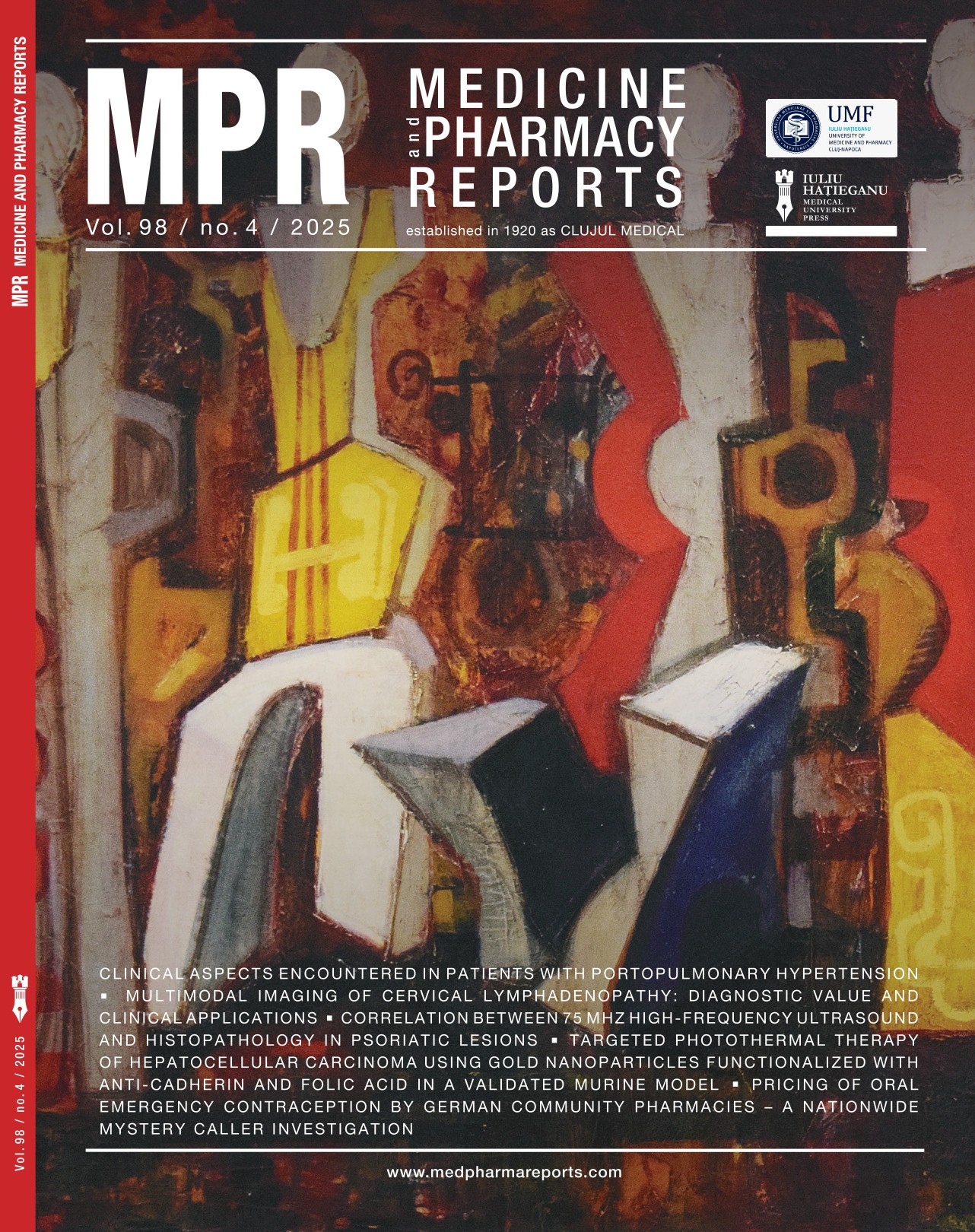Multimodal imaging of cervical lymphadenopathy: diagnostic value and clinical applications
DOI:
https://doi.org/10.15386/mpr-2924Keywords:
cervical lymphadenopathy, lymph node metastasis, head and neck, multimodality imagingAbstract
Introduction. Cervical lymphadenopathy encompasses a broad spectrum of malignant conditions, including metastatic involvement from head and neck or distant primaries, as well as primary lymphoid malignancies. Accurate imaging assessment is critical for the differential diagnosis, staging, and treatment planning. Advances in imaging now enable detailed evaluation of nodal morphology, vascularity, stiffness, and metabolic activity.
Methods. A narrative review was conducted using PubMed, Web of Science, and Google Scholar to identify studies published between January 2015 and June 2025 on imaging evaluation of cervical lymphadenopathy. The diagnostic performance, strengths, and limitations of various imaging techniques were summarized, with emphasis on recent advances and multimodal strategies.
Results. Conventional ultrasonography remains the first-line modality for superficial nodes, with Doppler and elastography improving characterization. Shear wave elastography offers quantitative stiffness assessment, enhancing specificity when combined with grayscale ultrasonography. Computed tomography and magnetic resonance imaging provide cross-sectional evaluation of deep or inaccessible nodal levels, with the latter offering superior soft-tissue contrast and functional techniques such as diffusion-weighted imaging. Fluorodeoxyglucose positron emission tomography contributes with metabolic information, improving detection of occult metastases and aiding systemic staging. No single modality is definitive; combined approaches yield higher accuracy and better surgical planning. Emerging technologies, including image fusion, and radiomics, show promise for refining diagnosis.
Conclusion. An integrated, multimodal imaging approach optimizes the evaluation of cervical lymph node metastases. Future developments in functional imaging, quantitative analysis, and artificial intelligence may further enhance diagnostic precision and enable personalized management strategies.
Downloads
Published
How to Cite
Issue
Section
License
Copyright (c) 2025 Dragos A. Țermure, Mîndra E. Badea, Delia D. Donci, Ovidiu Mureșan, Gabriel E. Petre
The authors are required to transfer the copyright of the published paper to the journal. This is done by agreeing to sign the Copyright Assignment Form. Whenever the case, authors are also required to send permissions to reproduce material (such as illustrations) from the copyright holder.

The papers published in the journal are licensed under a Creative Commons Attribution-NonCommercial-NoDerivatives 4.0 International License.

